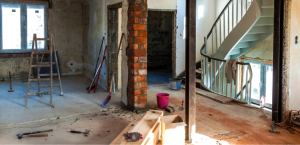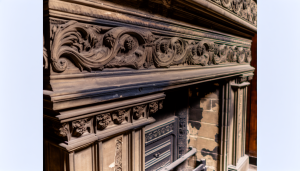A guide to insuring your heritage home
By Marlene Campbell
So, your historic building just received heritage designation and you are now one proud homeowner doing your part to preserve Canada’s built heritage. But just a moment, have you thought about what this means for your insurance policy? It does change things, but don’t panic. And don’t try to take back the designation. It’s not that bad. It’s just a matter of doing your homework, getting the facts and putting the proper policy in place. As a heritage building owner, this is something you are probably used to by now.
It is all for your own good because, should the need arise, you want your insurance coverage to do what you assumed it would: protect your investment and restore your building to its former glory.
Determine replacement costs
When insuring a property you need to understand that insurance companies base prices on the replacement cost of a home should it be destroyed or damaged, and the likelihood of that happening. Companies use computer programs to calculate replacement costs based on modern buildings and construction costs across Canada. For example, they’d consider the type of flooring in the house, the siding and the cost of the cupboards.
But that doesn’t work with designated heritage properties, many of which have unique, often elaborate, features that reflect the tastes and skills of their time. There is no computer program that gives the replacement cost of plaster mouldings that require shipping artisans in from different parts of the country — it’s a unique situation.
Before a company will consider insuring a heritage building they require an independent assessment to determine replacement costs. Many homeowners balk at this requirement because they’re required to pick up the cost of a qualified assessor themselves. Insurance companies will not accept a bank assessment done to obtain a mortgage because the bank is interested in market value and the insurance company is interested in replacement value. These are two very different things.
Mary Lambe, office manager of Hickey and Hyndman Insurance in Summerside, Prince Edward Island, points out that a client could pay $100,000 for a building in Summerside that would cost $800,000 to replace after a fire. The assessment, which must be kept current, is an upfront out-of-pocket expense, but the heritage building owner will have the peace of mind of knowing everyone is aware of the replacement costs — no hidden surprises to add to the stress of an unexpected emergency.
To find a qualified assessor check the Canadian Association of Professional Heritage Consultants’ website (www.caphc.ca) for listings. You can also check your local yellow pages. And talk to other heritage property owners and insurance representatives. Don’t be afraid to ask questions — the answers are free.
Determine the risks
When insurers consider covering buildings they look at the likelihood of a claim. To lower the risk and premium cost they usually like the building to be brought up to code. That includes the heating system, electrical, plumbing, oil tank and roof; older plumbing means a greater chance of water damage, older wiring can lead to fire, and roofs not shingled in the past twenty years may spring leaks.
The Insurance Bureau of Canada’s website (www.ibc.ca) gives a good outline of what insurance companies are looking for.
To these companies, prevention is the key. It is no surprise then that the number one threat to Canada’s built heritage is neglect of maintenance rather than single catastrophic events so often dramatized by large insurance claims. Some insurance companies specialize in riskier clients, so don’t despair if you can’t do everything immediately.
Be prepared to spend some time shopping around for insurance. After all, this building is likely the biggest investment of your life and you want it properly insured.
Look at local laws
Insurance companies also consider community and provincial legislation around heritage buildings when calculating your premium. For example, when a heritage building is destroyed by fire local laws often require it to be rebuilt on the original site with similar materials. Laws like this could raise claim costs and hence, your premium.
After you’ve insured your home you should keep an eye on any changes the town or province make to heritage legislation and make sure your insurance coverage reflects them. This may cost you money in the short term, but you’ll be glad you did it if you have to make a claim.
Ask lots of questions
It’s great to save money, but when it comes to insuring your designated property, cutting corners may end up costing you more in the long run. Remember that premium cost isn’t the only factor. Make sure to ask about the claims settlement process and the policy’s deductible. Don’t be afraid to shop around and ask lots of questions. Your insurance agent is your partner in preserving Canada’s built heritage. Be prepared to be open and honest with him or her — it will put you in the best position to make an informed decision.
Know where to look
The emphasis, again, is don’t be afraid to ask people in the heritage community questions. Other sources:
- Check the Insurance Bureau of Canada’s website (www.ibc.ca)
- Get written material from local insurance companies
- Ask your municipality for updates on bylaws
- Check out provincial and municipal heritage protection acts online or by phone
- Consult the Heritage Canada Foundation (heritagecanada@heritagecanada.org)
- Take a look at the Canada’s Historic Places website (www.historicplaces.ca)
Like it or not, being proactive is part of owning a heritage building. But the peace of mind is worth the time.







